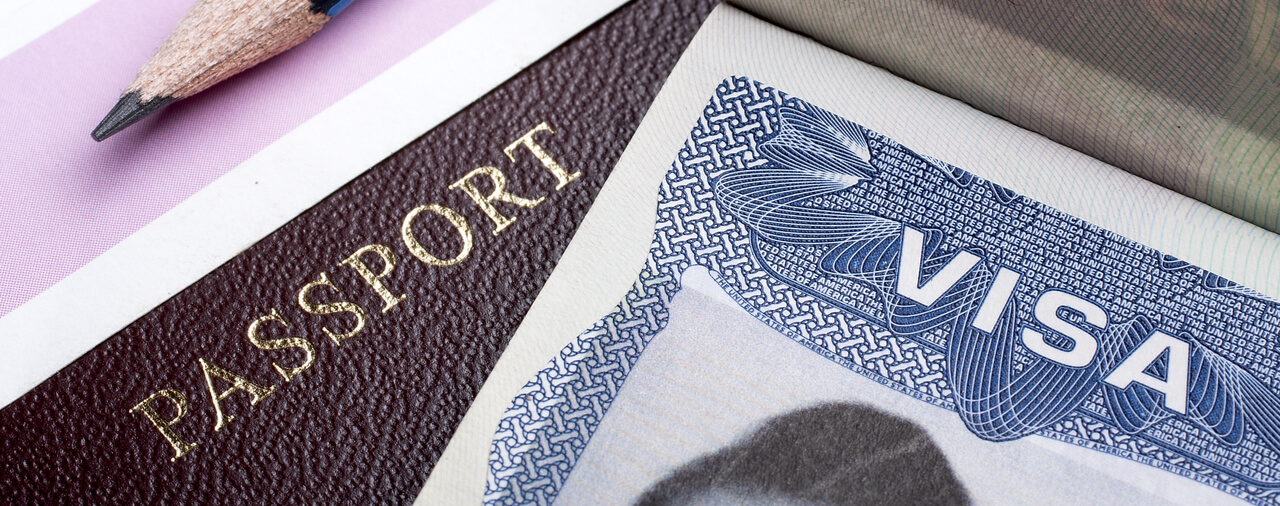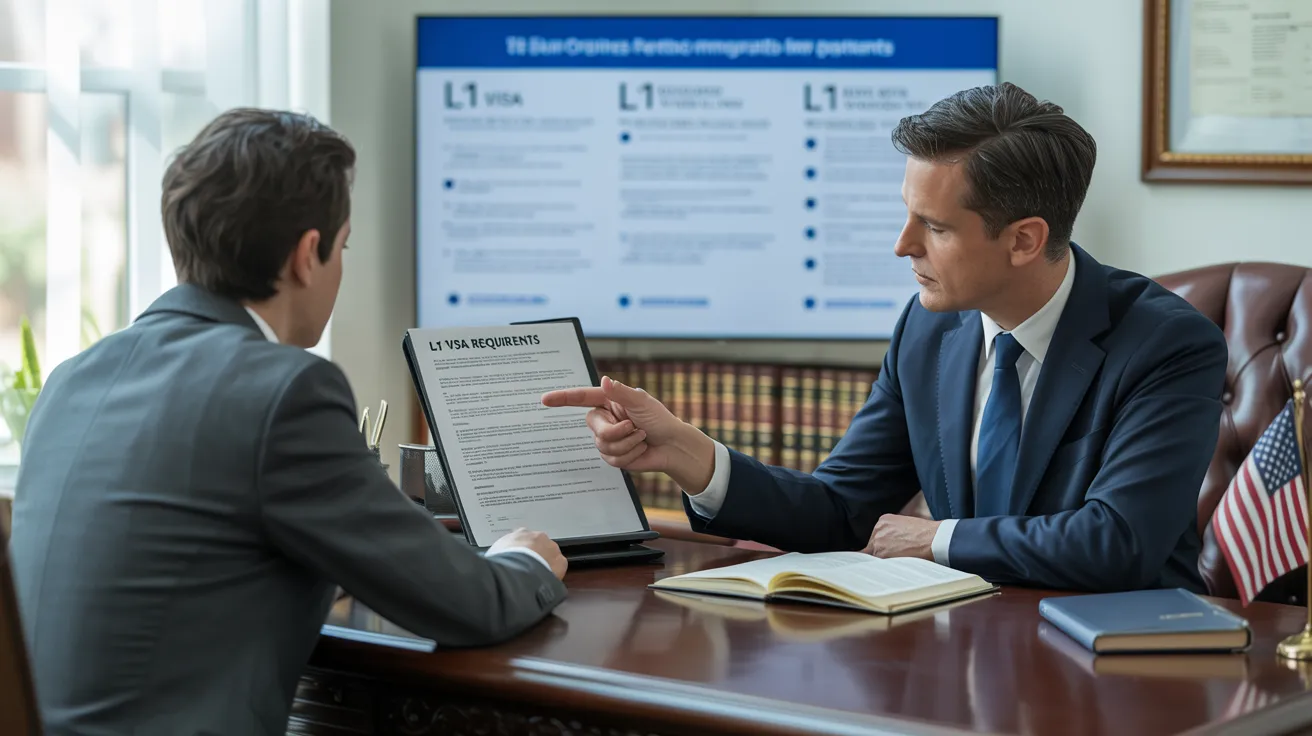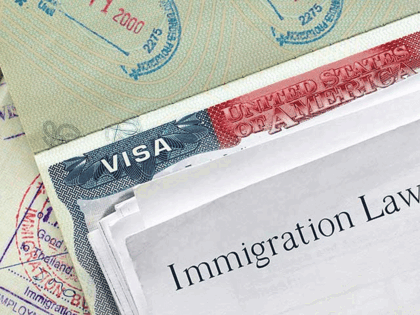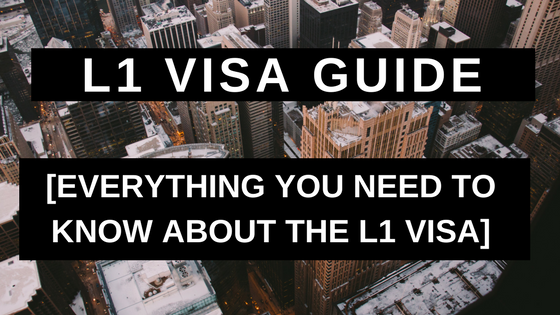Opening Opportunities: A Comprehensive Guide to the L1 Visa Process
The L1 visa process offers a vital path for multinational business seeking to move vital workers throughout borders. Recognizing the subtleties of qualification criteria, the differences in between L-1A and L-1B visas, and the intricacies of the application procedure can considerably impact an applicant's success. However, maneuvering this facility landscape is not without its challenges, and mindful attention to documents and company sponsorship is necessary. As we check out the essential components of this procedure, the techniques for conquering potential obstacles will certainly come to be obvious, exposing how educated prep work can open a world of opportunities.
Comprehending the L1 Visa
Recognizing the L1 visa requires acknowledging its importance as an important device for international business seeking to transfer competent employees in between worldwide workplaces. This non-immigrant visa category facilitates the motion of execs, supervisors, and specialized understanding employees to the United States, therefore allowing organizations to maintain functional continuity and harness international skill successfully. The L1 visa is divided right into 2 primary classifications: L-1A for managers and executives, and L-1B for workers possessing specialized knowledge.The L1 visa offers a critical function in enhancing a firm's one-upmanship in the worldwide industry - L1 Visa Requirements. By permitting business to move their key personnel, businesses can guarantee that crucial jobs are managed by qualified individuals that are already knowledgeable about the firm's culture and functional processes. This interior transfer mechanism not just fosters understanding sharing however also advertises innovation and collaboration across borders.Moreover, the L1 visa is often preferred for its reasonably uncomplicated application process contrasted to various other visa classifications, as it enables dual intent, allowing holders to pursue permanent residency while on a temporary copyright. This attribute makes the L1 visa particularly appealing for both companies and workers, as it improves the pathway for proficient professionals to establish lasting residency in the United States
Qualification Criteria
Qualification for the L1 visa depends upon a number of crucial requirements that guarantee both the staff member and the company fulfill certain certifications. This non-immigrant visa is made for multinational companies to move workers from consular services to U.S. counterparts.Firstly, the company must be a qualifying company, that includes a parent firm, branch, affiliate, or subsidiary of a united state company. The company should have been doing service for a minimum of one year both in the U.S. and abroad. This ensures that the company has sufficient operational stability and a legit presence.Secondly, the worker needs to hold a managerial, exec, or specialized knowledge placement. For L1A visas, the candidate needs to show managerial or executive credentials, while L1B visas concentrate on specialized understanding pertaining to the company's items, solutions, or procedures. Additionally, the staff member must have benefited the international entity for a minimum of one continual year within the last three years before their application.Lastly, the employee's function in the U.S. should straighten with their previous position, guaranteeing that their skills and know-how are leveraged for the business's benefit.
Kinds Of L1 Visas
The L1 visa group consists of two primary types designed to facilitate the transfer of staff members within multinational firms: the L1A visa for supervisors and execs, and the L1B visa for employees with specialized expertise. Each kind offers distinct purposes and has specific eligibility criteria.The L1A visa is customized for individuals who hold supervisory or executive placements within a company. This visa makes it possible for top-level workers to move to a united state branch, subsidiary, or affiliate of the very same organization. Candidates for the L1A visa have to show that they have actually been used in a supervisory or executive capability for a minimum of one continuous year within the past 3 years prior to their application. Furthermore, this visa provides a much longer duration of stay, at first granted for 3 years, with the possibility of extensions for as much as seven years.In contrast, the L1B visa is planned for specialists with specialized understanding related to the firm's items, solutions, or procedures. To qualify, candidates must show that their competence is essential to the organization which they have functioned for at the very least one continuous year within the last 3 years in a function that needed this specialized understanding. The L1B visa is originally provided for 3 years, with extensions available for up to five years.Both visa types are important for companies looking for to boost their global operations by leveraging competent workers, therefore promoting advancement and effectiveness within the U.S. market.
Application Process
Guiding via the L1 copyright procedure entails several vital steps that have to be meticulously complied with to ensure a successful outcome. The process begins with the U.S. employer, that must initially develop qualification by demonstrating a certifying connection with the international entity and verifying that the staff member fulfills the certain needs for the L1 visa classification being sought.Once qualification is validated, the employer initiates the procedure by filing Type I-129, the Application for a Nonimmigrant Worker, with the United State Citizenship and Migration Services (USCIS) This type should be come with by a comprehensive description of the work duties to be carried out, the organizational structure of both the U.S. and foreign entities, and the employee's qualifications. It's crucial to confirm that all details is precise and total, as noninclusions or mistakes can lead to hold-ups or denials.Upon authorization of the I-129 request, the next action involves the employee looking for the L1 visa at a united state consular office or consular office in their home nation. This stage calls for the completion of Kind DS-160, the Online Nonimmigrant copyright, and setting up an interview. Throughout the interview, the candidate has to provide evidence sustaining their credentials and the employer's petition.After the visa is approved, the worker can go into the USA to operate in the assigned role. In general, mindful prep work and adherence to every step of the application process are crucial for a successful L1 visa end result.
Required Paperwork

Vital Forms Needed
Steering the L1 Visa procedure needs careful attention to the vital types and paperwork essential for an effective application. The primary kind required is the Type I-129, Application for a Nonimmigrant Employee, which need to be completed and submitted by the U.S. employer. This kind describes the information of the employment offer and the certifications of the employee seeking the L1 Visa.Alongside Kind I-129, the applicant will certainly require to total Kind I-539 if accompanying household members are additionally requesting visas. Furthermore, the company should provide evidence of the certifying relationship in between the U.S. entity and the foreign entity, often requiring the entry of corporate records such as short articles of consolidation or monetary statements.Moreover, it is necessary to include the L Category Supplement to Form I-129, which specifies the sort of L Visa being requested-- either L-1A for managers and execs or L-1B for staff members with specialized knowledge. Candidates should guarantee that all forms are signed and dated suitably, as incomplete submissions can lead to hold-ups or denials. Effectively setting up these essential types lays the structure for a smoother L1 copyright procedure.

Supporting Evidence Requirements
Sustaining paperwork is crucial for a successful L1 copyright, as it confirms the cases made in the request. Applicants should provide a series of papers to demonstrate qualification for the visa, which is classified into 2 primary types: evidence of the certifying partnership between the united state and foreign entities and proof of the candidate's qualifications.To establish the partnership, candidates must send documentation such as corporate business graphes, economic statements, and proof of possession. These papers verify that the foreign business has a qualifying relationship with the united state company, whether as a moms and dad company, subsidiary, branch, or affiliate.For the applicant's credentials, crucial papers include a thorough work letter from the international company, detailing the applicant's task title, responsibilities, and period of work. Additionally, educational credentials, such as levels and diplomas, ought to be supplied to show the candidate's proficiency in the appropriate field.
Employer Sponsorship Files

Typical Challenges
Maneuvering the L1 visa procedure presents a number of typical difficulties that applicants ought to be conscious of. Key concerns frequently consist of stringent paperwork demands, possible hold-ups in processing times, and the need for strict legal compliance. Understanding these barriers can help candidates much better prepare and minimize risks during their copyright trip.
Documentation Demands
The L1 copyright procedure usually presents significant challenges associated with documents demands. Candidates must offer substantial documents to establish qualification, which can result in complication and possible delays. Key files consist of evidence of a certifying partnership in between the united state and international company, evidence of the applicant's work history, and thorough info concerning the task role in the U.S.One usual difficulty is collecting sufficient proof to demonstrate the nature of the certifying relationship. Companies frequently battle to present clear business graphes or economic declarations that illustrate the connection in between the entities. Additionally, guaranteeing that letters of assistance from employers properly reflect the candidate's task responsibilities and credentials is vital, as vague descriptions can lead to denials.Another problem develops from the demand for comprehensive task descriptions that line up with the L1 visa groups. Applicants have to verbalize not just their present function however also their managerial or specialized understanding responsibilities plainly. This necessitates a comprehensive understanding of both the candidate's position and the governing language utilized in L1 applications.
Handling Dead Time
Experiencing delays in handling times is an usual obstacle dealt with by L1 visa candidates, frequently causing stress and unpredictability. Several factors contribute to these hold-ups, including high application volumes, boosted analysis of applications, and management stockpiles within the united state Citizenship and Immigration Solutions (USCIS) Applicants may find that handling times can vary significantly relying on the solution facility managing their application, as each facility has its very own work and efficiency degrees. Additionally, the intricacy of the candidate's instance, such as the requirement for considerable paperwork or clarification, can better expand wait times.In some instances, issues connected to the applicant's existing immigration status or previous visa background may additionally result in additional hold-ups, as USCIS might call for additional evaluation or details. It is necessary for prospects to continue to be aggressive during this duration, keeping open communication with their employers and legal representatives to address any type of possible concerns promptly.Understanding these processing time obstacles can help L1 visa applicants get ready for feasible hold-ups and reduce the effect on their shift and profession plans. Persistence and persistance are essential merits in steering this detailed process.
Legal Conformity Issues
Many L1 visa applicants run into lawful conformity concerns that can complicate their trip towards getting the visa. Understanding and adhering to the specific regulations set by the U.S. Citizenship and Migration Services (USCIS) is important. Typical difficulties include showing the qualifying partnership in between the international and united state employers, in addition to verifying that the applicant has the requisite specialized knowledge or supervisory capacity.Additionally, candidates have to provide comprehensive documents detailing their work obligations, corporate framework, and monetary practicality of the U.S. entity. Inadequate or imprecise documents can result in hold-ups or also denials. Companies need to also assure that they follow labor regulations, including wage and working problem criteria, which can influence visa eligibility.Another typical problem entails preserving compliance with the regards to the visa when provided. Changes in employment condition, work duties, or company framework can demand modifications to the visa, which otherwise addressed quickly can bring about legal complications. Because of this, remaining notified about conformity requirements and seeking lawful advice when necessary is necessary to navigate the intricacies of the L1 visa procedure successfully.
Tips for Success
Success in the L1 copyright process usually rests on precise prep work and attention to detail. To boost your chances of authorization, start by extensively comprehending the qualification needs for both the L1A and L1B visa categories. Review whether your position at the business certifies as managerial, exec, or specialized knowledge, as this classification notably impacts your application.Next, gather considerable documentation that substantiates your cases. This includes business charts, comprehensive work summaries, and proof of the business's functional structure. Clear and concise proof of the certifying relationship between the united state entity and the foreign entity is important. Verify that all records are arranged rationally and presented in a specialist way, as this reflects your dedication and severity regarding the application.Engage the solutions of an experienced migration lawyer who focuses on L1 visas. Their knowledge can show important, directing you with complex policies and assuring that all documents complies with existing legislations. Furthermore, plan for the interview by exercising answers to typical inquiries and being ready to review your role and contributions to the company extensive.
Regularly Asked Questions
Can Household Members Come With the L1 Visa Holder?
Yes, relative of L1 visa holders, consisting of partners and unmarried kids under 21, can come with the key visa holder. They may additionally look for L2 visas, which allow them to reside in the United States.
How Much Time Can I Remain On an L1 Visa?
The L1 visa allows preliminary keeps of approximately 3 years, with the possibility of expansion. L1A visa holders may stay for a maximum of seven years, while L1B visa owners can continue to be for five years.
Can L1 Visa Owners Use for a copyright?
Yes, L1 visa holders can make an application for a permit. L1 Visa. They may pursue permanent residency with employment-based groups, generally requiring sponsorship from their company, supplied they meet the essential credentials and documentation requirements
What Takes place if My L1 copyright Is Rejected?
If your L1 copyright is refuted, you may receive a notice outlining the reasons for rejection. You can look for to appeal the decision, reapply, or check out alternative visa options based upon your scenarios.
Are There Any Travel Constraints With an L1 Visa?
An L1 visa typically permits global travel; however, re-entry to the U. L1 Visa.S. rests upon preserving legitimate standing. Tourists ought to guarantee compliance with visa conditions to prevent issues upon return
Verdict
